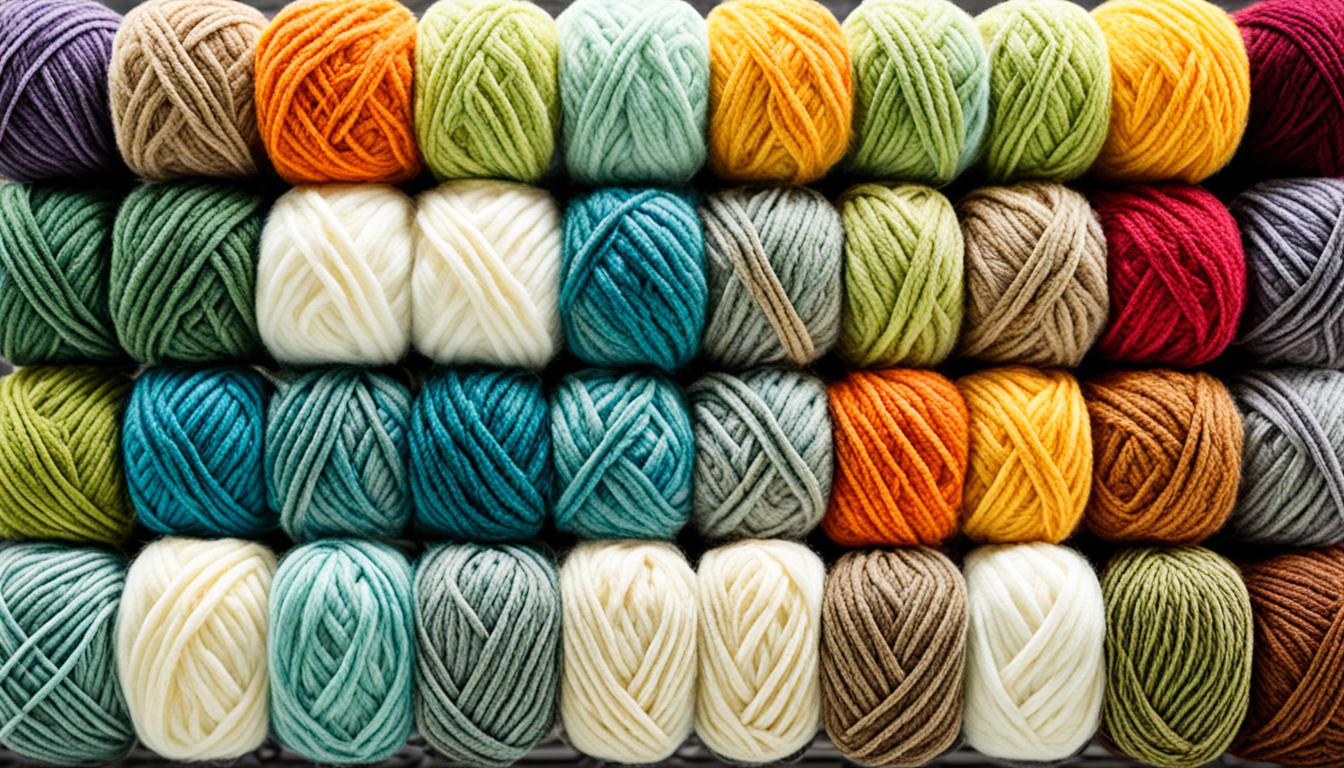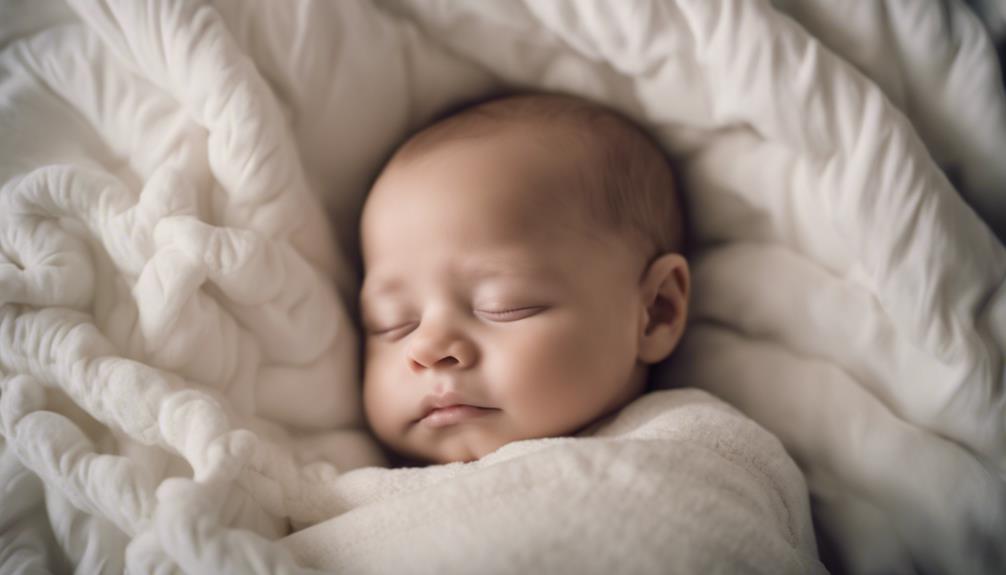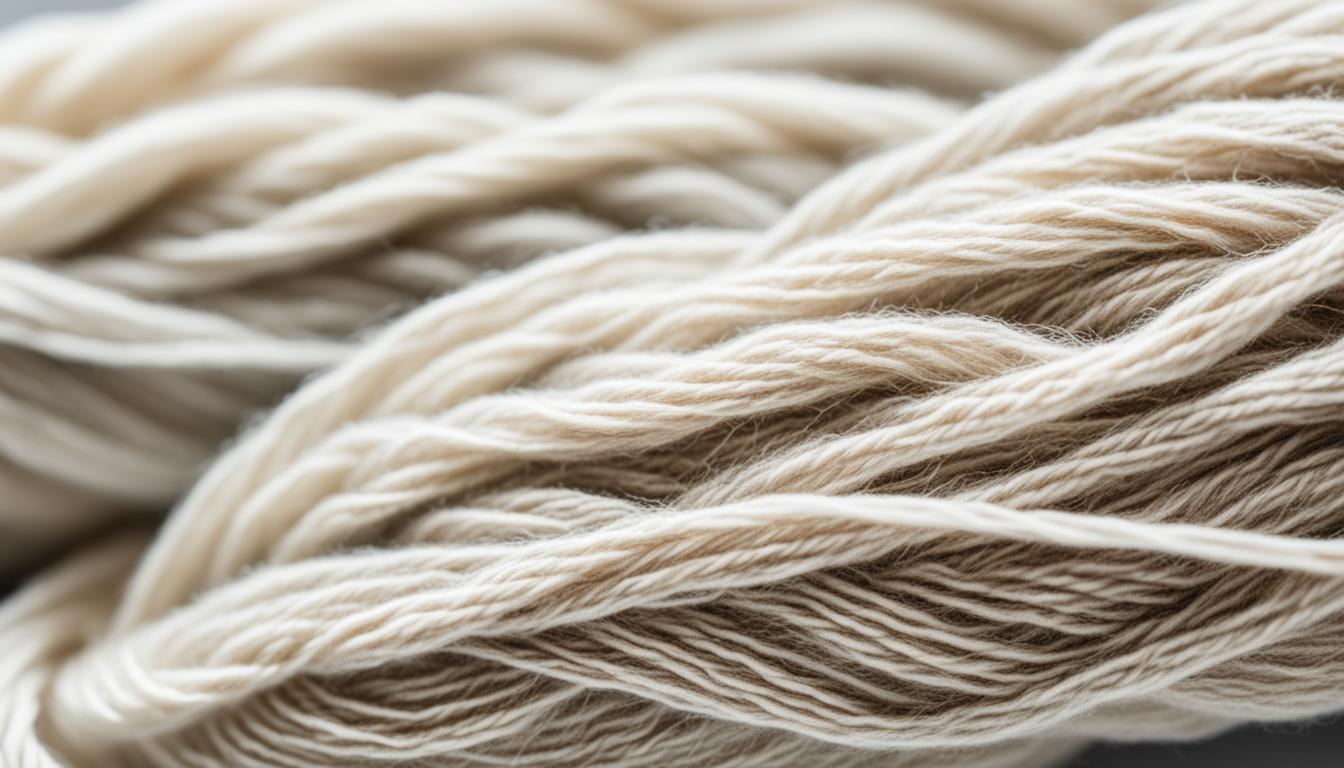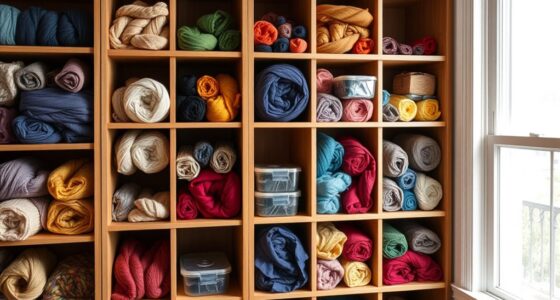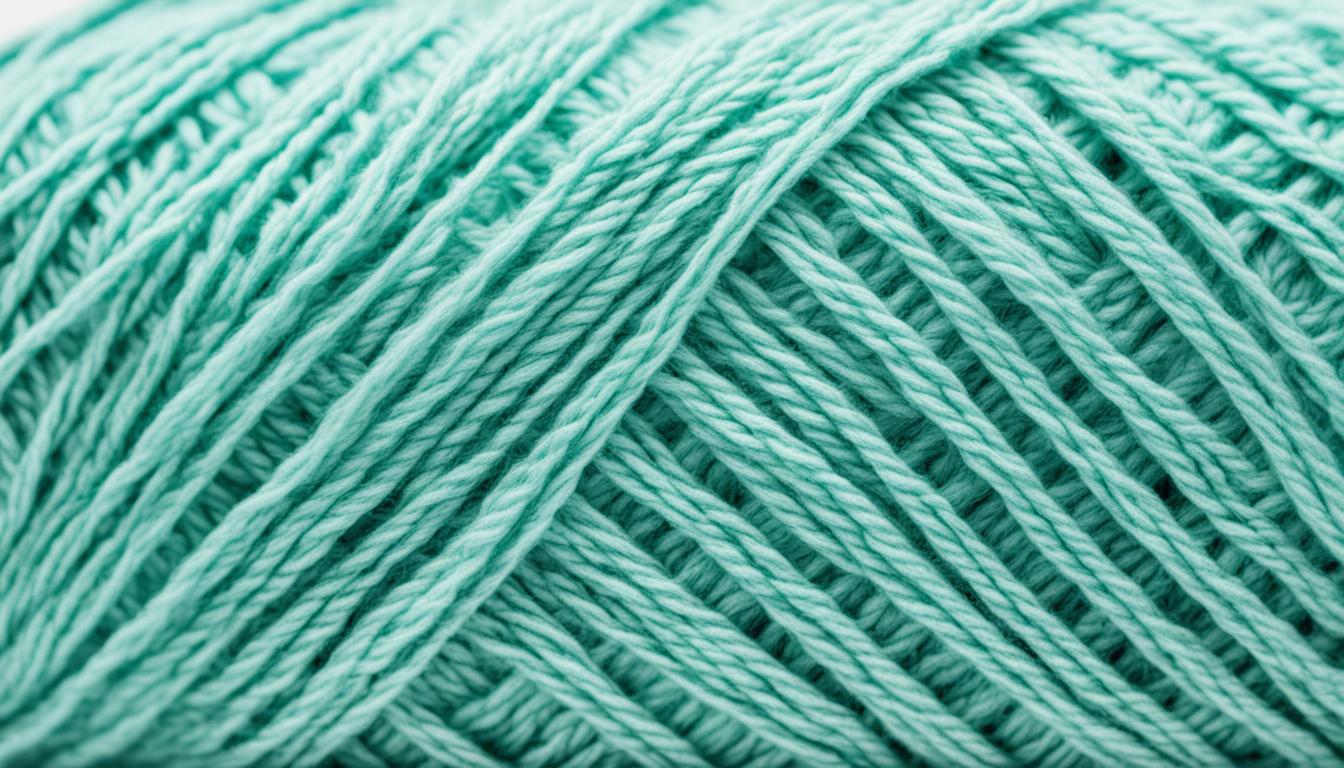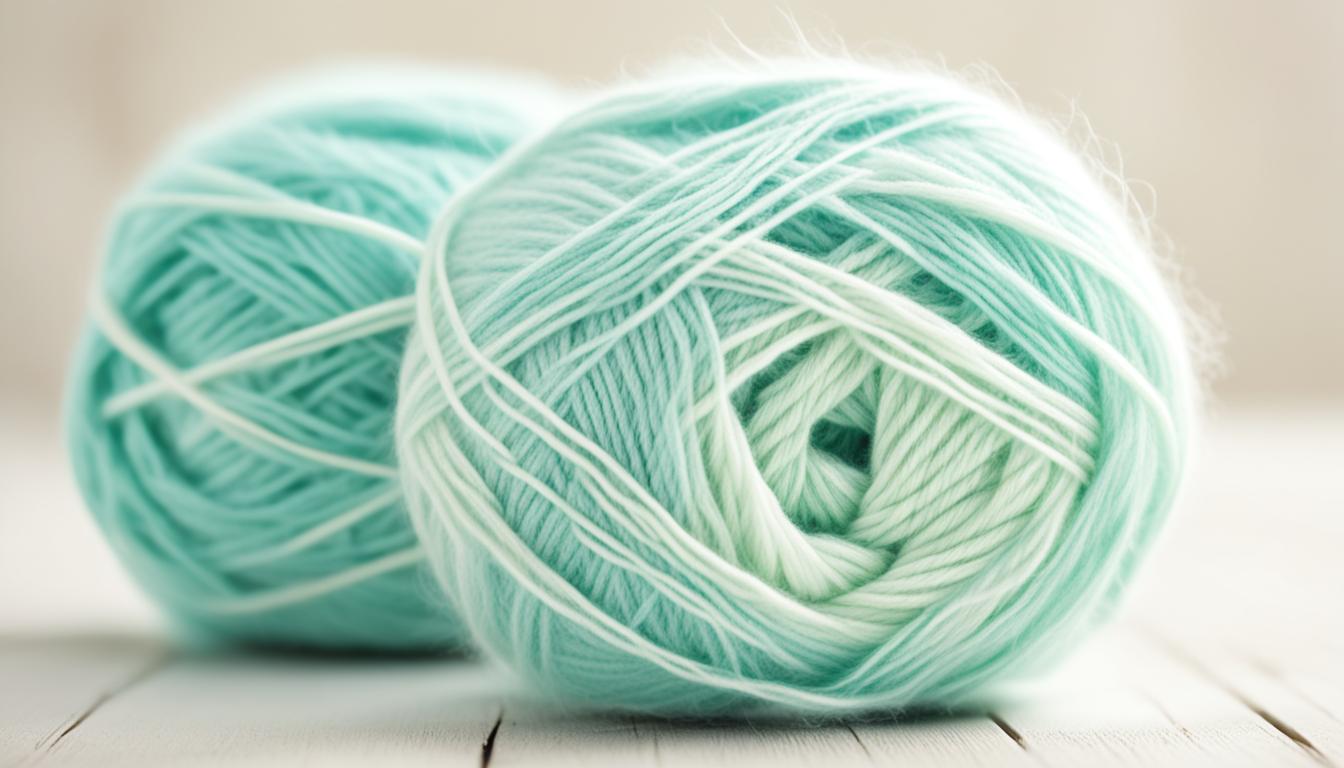When it comes to tufting, choosing the right yarn is crucial for achieving stunning results. But with so many options available, how do you know which yarn is the best for tufting? Is there a one-size-fits-all solution, or does it depend on the project?
In this comprehensive guide, we will explore the different types of yarn suitable for tufting and provide tips to help you make the best selection. Whether you’re a seasoned tufter or just starting out, we’ve got you covered. Let’s dive in!
Types of Yarn for Tufting
When it comes to tufting, the choice of yarn is key to achieving stunning results. There are several types of yarn that can be used for tufting projects, each with its own characteristics and suitability. The three most common options are acrylic, cotton, and wool yarn. Let’s explore each type in detail to help you make the right choice for your tufting needs.
1. Acrylic Yarn
Acrylic yarn is a popular choice for tufting due to its affordability and wide range of colors and weights. It is readily available and easy to work with. However, it is important to note that acrylic yarn may not produce high-quality items. Over time, it can wear off quickly, resulting in a fuzzy layer on top of the rug or tufted piece. To achieve better results, it is recommended to opt for decent quality acrylic yarn.
2. Cotton Yarn
Cotton yarn is known for its softness and durability, making it a suitable choice for tufted wall hanging pieces. Cotton yarn is natural and breathable, creating a cozy and comfortable texture. However, it is not recommended for rugs that will be placed on the floor, as cotton yarn is too delicate and won’t withstand heavy foot traffic.
3. Wool Yarn
Wool yarn is considered the best option for tufting due to its sturdiness and durability. It is ideal for both rugs and wall hanging pieces. Wool is easy to tuft with, can be easily carved and sheared, and provides excellent texture and longevity. It is an excellent choice for high-traffic areas and ensures that your tufted pieces will last for years to come.
When selecting the yarn for your tufting project, consider the desired look, feel, and durability. Acrylic, cotton, and wool yarns each have their own advantages and limitations. You can experiment with different yarns to determine which one best meets your needs. Remember to choose yarns that align with the desired color palette and overall aesthetic of your project.
| Yarn Type | Advantages | Limitations |
|---|---|---|
| Acrylic | Affordable, wide color range, easy to work with | Potential for low-quality results, prone to fuzziness |
| Cotton | Soft, durable, breathable | Not suitable for high-foot traffic areas |
| Wool | Sturdy, durable, easy to tuft, excellent texture | Higher cost compared to acrylic and cotton |
By considering the various options and their pros and cons, you can select the perfect yarn for your tufting project. Remember, the choice of yarn plays a significant role in achieving the desired look, feel, and durability of your tufted pieces.
Acrylic Yarn for Tufting
When it comes to tufting, acrylic yarn is a popular choice among crafters. Its affordability, wide range of colors, and various weights make it an attractive option for tufting projects. With acrylic yarn, you can let your creativity run wild and experiment with vibrant shades to achieve stunning tufted pieces.
However, it’s important to note that not all acrylic yarns are created equal. While acrylic yarn offers many benefits, such as being lightweight and easy to work with, it may not always produce high-quality items.
One of the drawbacks of acrylic yarn is its tendency to wear off quickly, especially in high-traffic areas. This can result in a fuzzy layer on top of the tufted rug, diminishing the overall appearance and durability. To avoid this issue, it is recommended to opt for decent quality acrylic yarn that is specifically designed for tufting.
To give your tufted projects a polished and professional look, choose acrylic yarn with a smooth texture and tight twist. This will help prevent the yarn from fraying or shedding excessively over time. Additionally, selecting acrylic yarn with a higher weight or ply can enhance the durability and longevity of your tufted pieces.
“Acrylic yarn is a versatile option for tufting, offering affordability and a wide range of colors. However, it is crucial to choose a decent quality yarn to avoid issues like fuzziness and wear. Experiment with different acrylic yarns, finding one with a smooth texture and tight twist for the best results.”
To summarize, acrylic yarn is an excellent choice for tufting due to its affordability and color variety. However, it’s essential to select a decent quality acrylic yarn to ensure the longevity and overall appearance of your tufted pieces. By considering the texture, twist, and weight of the acrylic yarn, you can create stunning tufted projects that will impress. Remember to always test different yarns and techniques to find the perfect acrylic yarn for your tufting endeavors.
Cotton Yarn for Tufting
When it comes to tufting, cotton yarn offers a winning combination of softness and durability. It is a popular choice for creating beautiful and intricate wall hanging pieces that add a touch of elegance to any space. The natural fibers of cotton lend a soft and luxurious feel to tufted creations, making them visually appealing and inviting to touch.
One advantage of cotton yarn for tufting is its availability in a wide range of colors, allowing you to unleash your creativity and bring your artistic vision to life. Whether you prefer soft pastels or vibrant, eye-catching hues, cotton yarn provides endless possibilities to match your desired aesthetic.
However, it is important to note that cotton yarn is not recommended for tufted rugs that will be placed on the floor. While cotton is durable, it is too delicate to withstand heavy foot traffic over time. To ensure the longevity of your tufted rugs, consider opting for sturdier yarn options such as wool or acrylic.
For tufted wall hanging pieces, cotton yarn is an excellent choice. Its softness and durability make it ideal for creating intricate patterns and textures that elevate your decor. Whether you want to craft a delicate floral design or a bold, geometric masterpiece, cotton yarn is a versatile and reliable option.
Advantages of Cotton Yarn for Tufting:
- Soft and luxurious feel
- Wide range of colors
- Perfect for wall hanging pieces
- Allows intricate patterns and textures
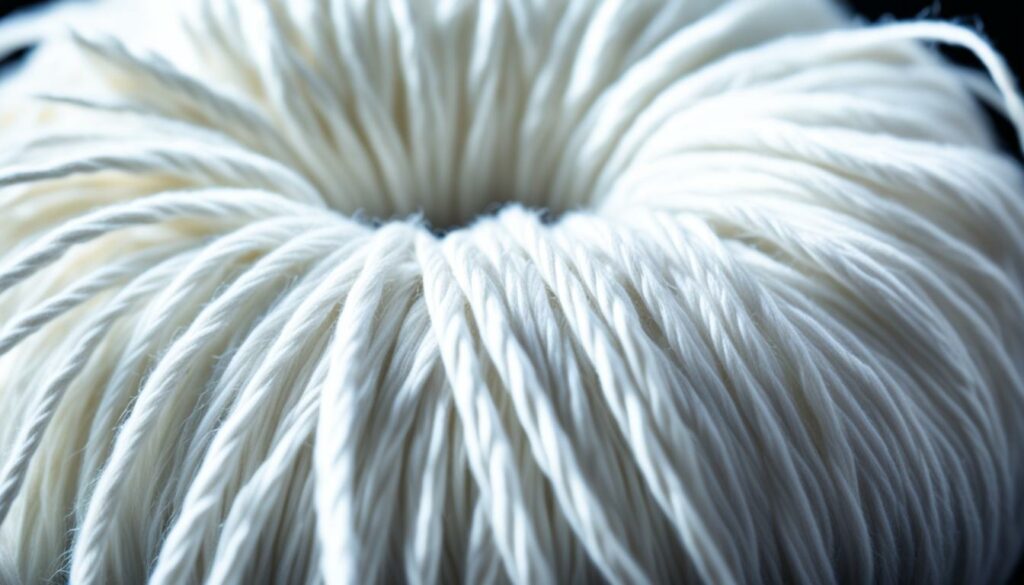
“Cotton yarn provides a soft and luxurious feel, making it a perfect choice for tufted wall hanging pieces.”
Overall, cotton yarn offers a delightful combination of softness, durability, and versatility for tufting projects. Whether you’re a seasoned tufter or just starting out, incorporating cotton yarn into your creations can result in stunning pieces that bring joy and beauty to your space.
Wool Yarn for Tufting
When it comes to tufting, using the right yarn is crucial for achieving stunning and durable results. Among the different yarn options available, wool yarn stands out as the top choice for both rugs and wall hanging pieces.
Wool yarn is known for its superior strength and durability compared to acrylic and cotton yarn. It can withstand high-traffic areas without wearing down easily, making it perfect for rugs that will be placed on the floor.
Not only is wool yarn sturdy, but it’s also easy to tuft with. Its natural fibers allow for easy carving and shearing, enabling you to create intricate designs and achieve desired textures in your tufted pieces.
We recommend using wool yarn for tufting projects due to its exceptional texture and longevity. It provides a soft and luxurious feel to your finished pieces, elevating their overall aesthetic appeal.
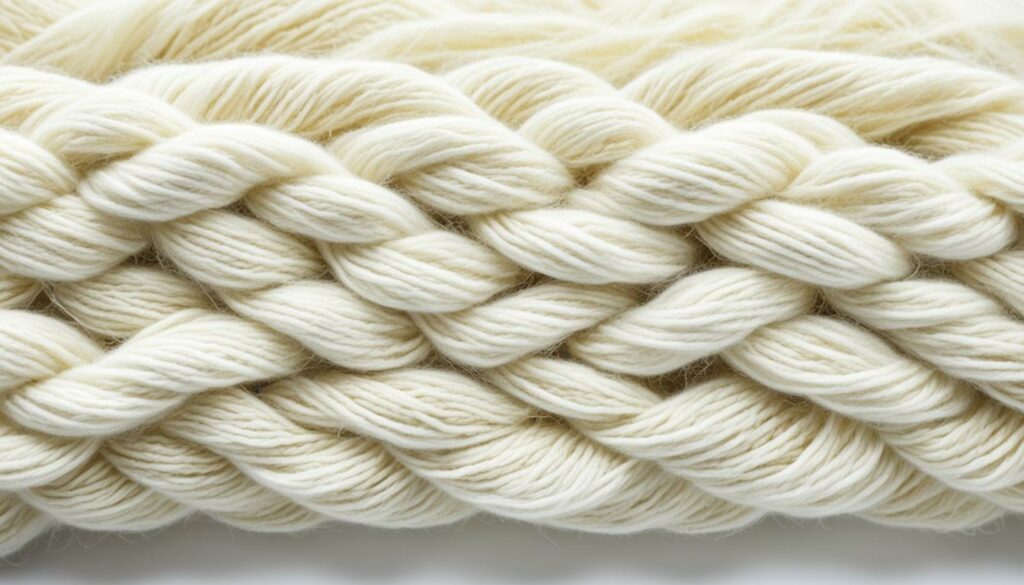
Whether you’re creating a cozy rug for your living space or a statement wall hanging for your bedroom, wool yarn is a reliable and versatile choice that will enhance the beauty and durability of your tufted creations.
Choosing the Right Yarn Material for Tufting
When it comes to tufting, the choice of yarn material is crucial for achieving beautiful and durable results. There are several options available, including acrylic, cotton, and wool. Each material has its own unique characteristics and suitability for different tufting projects. Let’s take a closer look at these yarn materials:
Acrylic Yarn
Acrylic yarn is the least expensive option, making it a popular choice for those on a budget. It is also widely available in a variety of colors and weights, offering a wide range of creative possibilities. However, it’s important to note that acrylic yarn may not produce high-quality items and can wear off quickly, resulting in a fuzzy layer on top of the rug. To achieve better results, it is recommended to opt for decent quality acrylic yarn.
Cotton Yarn
If you’re looking for softness and durability, cotton yarn is an excellent choice for tufting. It creates a smooth and comfortable surface, making it ideal for tufted wall hanging pieces. However, cotton yarn is not recommended for rugs that will be placed on the floor, as it is too delicate and won’t withstand heavy foot traffic. Keep in mind the intended use of your tufted piece when considering cotton yarn.
Wool Yarn
When it comes to durability and versatility, wool yarn is the top choice for tufting. Wool is known for its sturdiness and resilience, making it suitable for both rugs and wall hangings. It is easy to tuft with, can be carved and sheared easily, and provides excellent texture and longevity to tufted pieces. If you’re looking for a yarn material that can withstand high-traffic areas and create stunning tufted pieces, wool is your best bet.
When selecting yarn material for tufting projects, consider factors such as budget, intended use, and desired characteristics of the finished piece. Acrylic yarn is affordable but may lack quality, while cotton yarn offers softness but is better suited for wall hangings. Wool yarn, on the other hand, provides durability and versatility for both rugs and wall hangings.
Now that you have a better understanding of the different yarn materials available for tufting, you can make an informed decision based on your specific requirements and preferences. Experiment with different materials, colors, and textures to create unique and beautiful tufted pieces. Happy tufting!
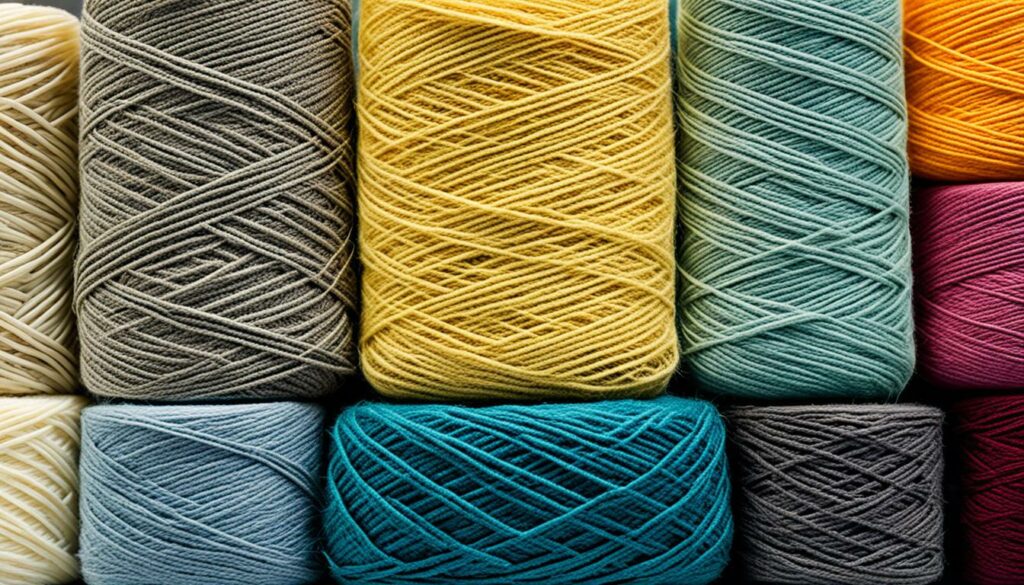
Comparison of Yarn Materials for Tufting
| Yarn Material | Pros | Cons |
|---|---|---|
| Acrylic Yarn | Affordable, wide color variety | Poor quality, wears off quickly |
| Cotton Yarn | Soft, durable | Not suitable for high-traffic areas |
| Wool Yarn | Durable, versatile, excellent texture | Higher cost |
Considerations for Yarn Ply and Weight
When selecting yarn for tufting, it’s important to consider two key factors: yarn ply and weight. These factors play a significant role in achieving optimal tufting results. Let’s explore each of them in detail.
Understanding Yarn Ply
Yarn ply refers to the number of single threads twisted together to compose the yarn. The ply directly influences the strength and durability of the yarn. Higher ply yarns, such as 2 or 3-ply, are more robust and less likely to break or fray compared to single-ply yarns. This is crucial for tufting, as you want a yarn that can withstand the tufting process without compromising the integrity of your project.
Considering Yarn Weight
Yarn weight, on the other hand, refers to the thickness of the yarn. Different tufting guns have specific requirements for yarn thickness to ensure smooth operation. Most tufting guns work best with DK/light worsted or aran/worsted weight yarns, using 2 or 3 strands together. This combination creates the appropriate thickness for the tufting gun’s needle, preventing the yarn from sliding out and ensuring consistent tufting results.
It’s worth noting that yarn weight also affects the overall texture and appearance of your tufted piece. Thicker yarns result in chunkier tufts, while thinner yarns create a more delicate and refined look. Consider the desired aesthetic and the intended use of your tufted project when selecting the appropriate yarn weight.
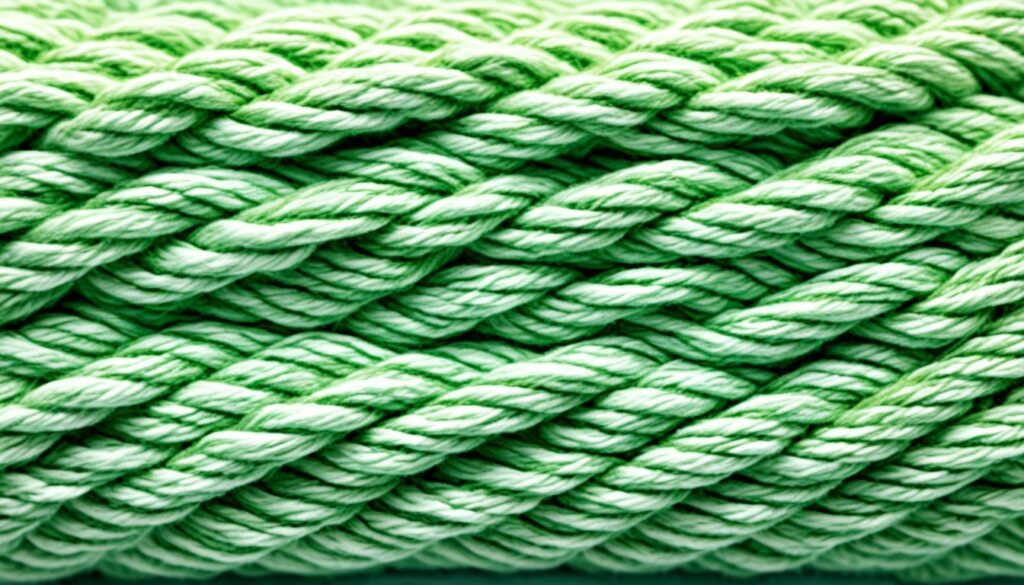
To help you select the right yarn ply and weight for your tufting projects, the following table provides a handy reference:
| Yarn Ply | Yarn Weight | Recommended Use |
|---|---|---|
| 2-ply | DK/light worsted | Versatile, suitable for a range of tufted projects |
| 3-ply | Aran/worsted | Durable, ideal for high-traffic areas or heavier tufted pieces |
Remember, selecting the appropriate yarn ply and weight is crucial for the success of your tufting projects. Ensuring the right strength and thickness will contribute to the longevity and overall quality of your tufted pieces. Experiment with different combinations to achieve the desired texture, durability, and visual impact.
Calculating Yarn Quantity for Tufting
When it comes to tufting, it’s important to have the right amount of yarn for your project. Calculating the yarn quantity depends on several factors, including the project size, pile height, loop length, and line tightness.
To ensure you have enough yarn, it’s recommended to feed at least two strands of light or medium yarn into your tufting gun. This will give your tufted piece the desired thickness and texture.
As a starting point, you can consider using one 7 oz skein of medium weight yarn split in half for every square foot of tufting, especially when using a cut pile machine. This estimation provides enough yarn to cover the surface area effectively.
However, it’s essential to keep in mind that different tufting techniques and design complexities may require more or less yarn. It’s always a good idea to estimate slightly more yarn than you think you’ll need to avoid running out in the middle of your project.
Here’s a table summarizing the approximate yarn quantity needed based on tufting machine types:
| Tufting Machine Type | Approximate Yarn Quantity per Square Foot |
|---|---|
| Cut Pile Machine | Approximately half of a 7 oz skein of medium weight yarn |
| Loop Pile Machine | Approximately one 7 oz skein of medium weight yarn |
Note: These quantities are estimated and may vary depending on your unique tufting project.
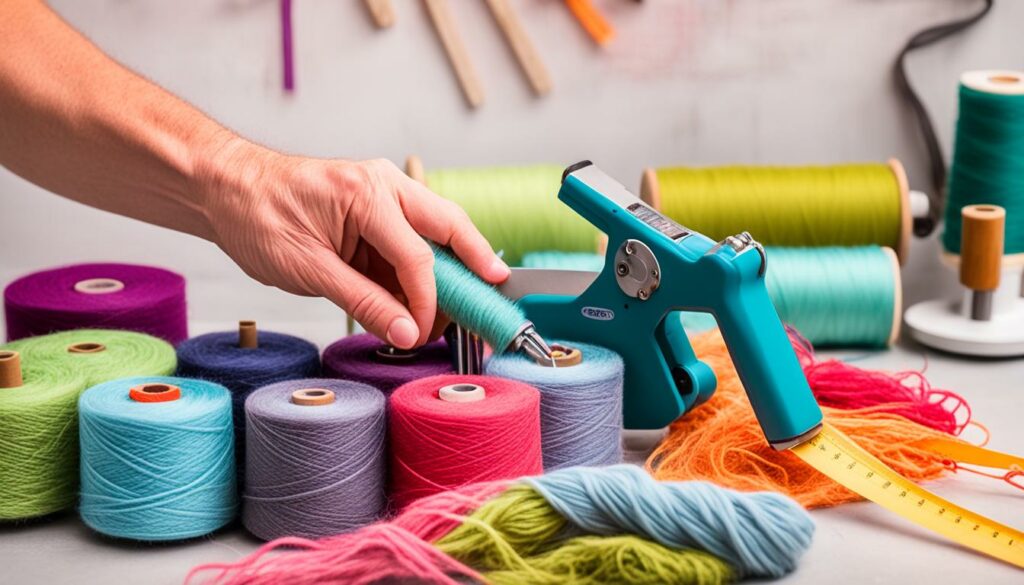
Recommended Yarns for Tufting
To help you make an informed decision, here are some recommended yarns for tufting:
- 100% Pure Virgin New Zealand Wool by Tufting Nation
- Lion Brand Wool-Ease Thick & Quick Bulky Yarn
- Lily Sugar’n Cream Cotton Cone Yarn
- Half & Half Wool Blend Yarn by Tuftin Asia
- Reflect Eco-Cotton Yarn by Tuft the World
- Red Heart Medium Worsted Acrylic Yarn
These yarns have been carefully selected for their quality, durability, and suitability for tufting projects. Whether you’re creating a cozy rug or a striking wall hanging, these yarns will help you achieve professional-looking results. Let’s take a closer look at each of them:
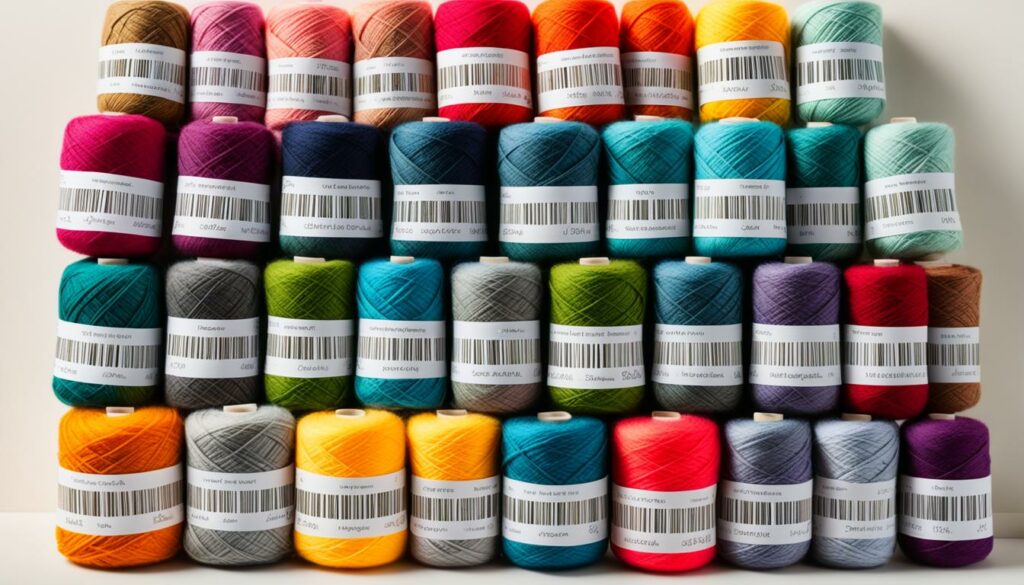
Tufting Nation 100% Pure Virgin New Zealand Wool
Tufting Nation’s 100% Pure Virgin New Zealand Wool is a high-quality yarn that provides excellent texture and softness to your tufted pieces. It is known for its durability and resilience, making it ideal for both rugs and wall hangings. With a wide range of vibrant colors to choose from, you’ll be able to bring your creative vision to life.
Lion Brand Wool-Ease Thick & Quick Bulky Yarn
Lion Brand’s Wool-Ease Thick & Quick Bulky Yarn is perfect for those who prefer working with thicker yarns. This yarn offers warmth, softness, and easy care, making it ideal for creating cozy rugs. Available in a variety of solid colors and beautiful variegated shades, you can add depth and visual interest to your tufted pieces.
Lily Sugar’n Cream Cotton Cone Yarn
Lily Sugar’n Cream Cotton Cone Yarn is a top choice for tufted wall hangings. Made from 100% cotton, this yarn offers exceptional softness and durability. It is available in a range of vibrant colors and is machine washable, making it easy to maintain the clean and fresh look of your tufted creations.
Half & Half Wool Blend Yarn by Tuftin Asia
Tuftin Asia’s Half & Half Wool Blend Yarn combines the best of wool and acrylic fibers. This blend offers the softness and warmth of wool with the affordability and versatility of acrylic. It is an excellent choice for both rugs and wall hangings, providing a balance between durability and cost-effectiveness.
Reflect Eco-Cotton Yarn by Tuft the World
Tuft the World’s Reflect Eco-Cotton Yarn is an eco-friendly option for tufting enthusiasts. Made from recycled cotton fibers, this yarn not only reduces waste but also offers great stitch definition and softness. It comes in a wide range of colors, allowing you to create tufted pieces that are not only beautiful but also sustainable.
Red Heart Medium Worsted Acrylic Yarn
Red Heart’s Medium Worsted Acrylic Yarn is a versatile and affordable option for tufting projects. With its wide range of colors and impressive colorfastness, this yarn allows you to unleash your creativity. It is easy to work with and provides excellent stitch definition, making it a popular choice among tufting enthusiasts.
These recommended yarns for tufting offer a variety of options to suit different preferences and project requirements. Whether you prioritize durability, softness, color availability, or environmental sustainability, you’ll find the perfect yarn to bring your tufting creations to life.
Tips and Recommendations for Tufting Yarn Selection
Choosing the right yarn is crucial for achieving impressive tufting results. Here are some tips and recommendations to guide you in selecting the perfect yarn for your tufting projects:
- Consider the durability and intended use of your tufted piece when choosing yarn. If it will be placed in a high-traffic area, opt for a sturdy and long-lasting yarn like wool.
- Test different yarns to determine their suitability for your project. Experiment with various textures, thicknesses, and colors to find the one that best complements your design.
- Use at least two strands of yarn for the tufting gun to ensure proper thickness. This will prevent the yarn from looking sparse and create a fuller, more luxurious finish.
- Choose yarns with the desired color, texture, and feel for your finished piece. Consider the overall aesthetic you want to achieve and select yarns that align with your vision.
- Follow the manufacturer’s recommendations for care and maintenance of your chosen yarn. This will help prolong the lifespan of your tufted creation and keep it looking its best.
By keeping these tips in mind, you’ll be well-equipped to make informed decisions when it comes to selecting yarn for your tufting projects.
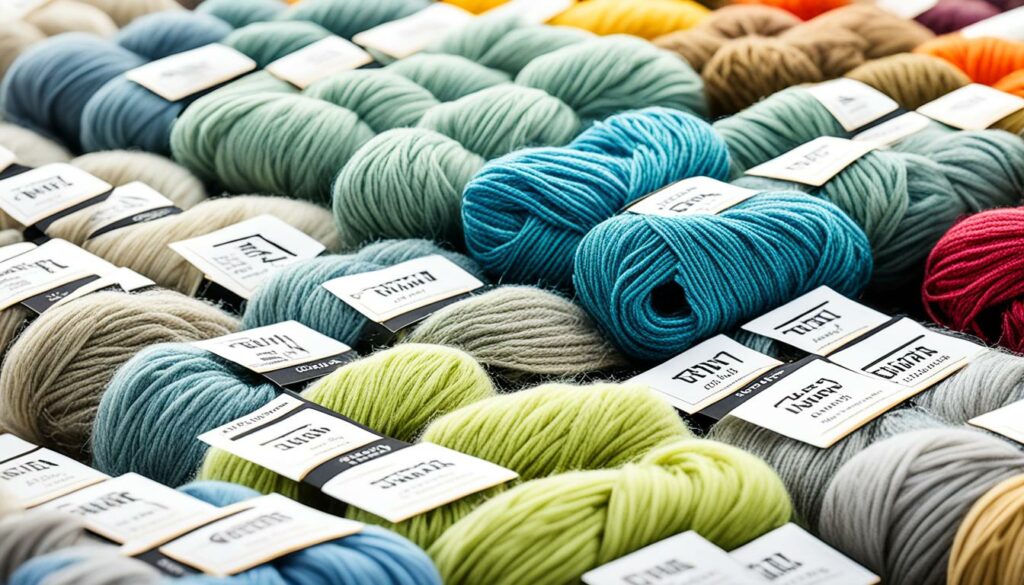
Now, let’s move on to our final section, where we’ll wrap up our guide on tufting yarn selection and provide some closing thoughts.
Conclusion
Choosing the right yarn is essential for successful tufting projects. By considering factors such as material, ply and weight, and quantity needed, you can make an informed decision. Acrylic, cotton, and wool are the main options, with wool being the recommended choice for its durability and versatility. Experiment with different yarns and follow the provided tips to achieve stunning tufted pieces. Happy tufting!
